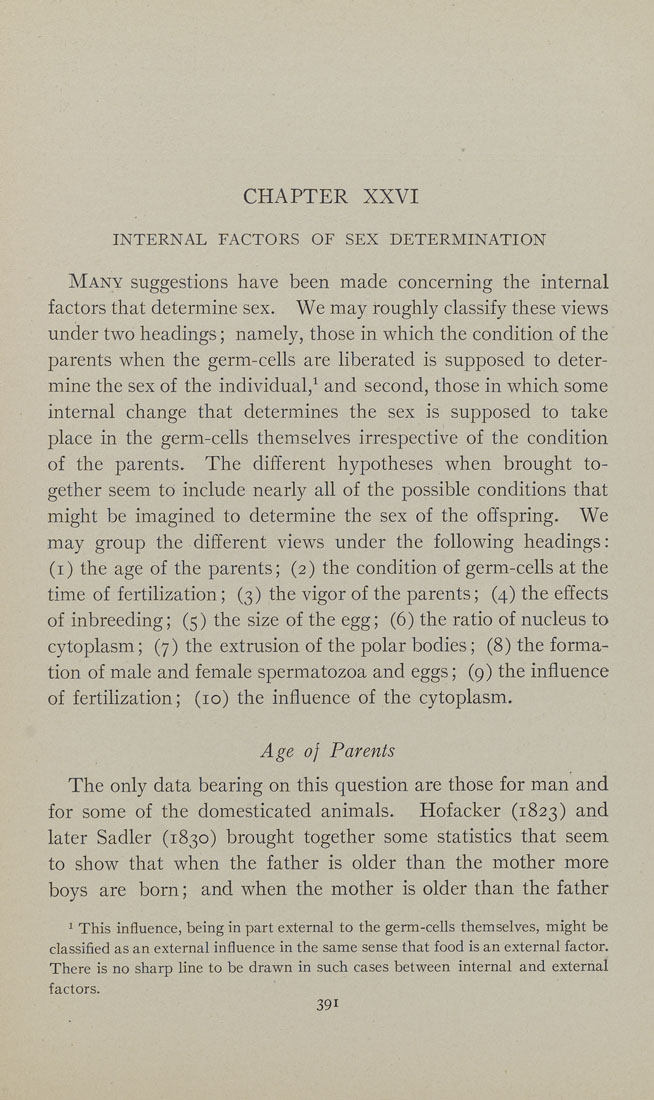Morgan, Thomas Hunt, Experimental zoölogy
(New York : London : The Macmillan Company ; Macmillan & Co., Ltd., 1907.)
|
||
|
|
|
|
| Page 391 |

CHAPTER XXVI INTERNAL FACTORS OF SEX DETERMINATION Many suggestions have been made concerning the internal factors that determine sex. We may roughly classify these views under two headings; namely, those in which the condition of the parents when the germ-cells are liberated is supposed to deter¬ mine the sex of the individual,^ and second, those in which some internal change that determines the sex is supposed to take place in the germ-cells themselves irrespective of the condition of the parents. The different hypotheses when brought to¬ gether seem to include nearly all of the possible conditions that might be imagined to determine the sex of the offspring. We may group the different views under the following headings: (i) the age of the parents; (2) the condition of germ-cells at the time of fertilization; (3) the vigor of the parents; (4) the effects of inbreeding; (5) the size of the egg; (6) the ratio of nucleus to cytoplasm; (7) the extrusion of the polar bodies; (8) the forma¬ tion of male and female spermatozoa and eggs; (9) the influence of fertilization; (10) the influence of the cytoplasm. Age of Parents The only data bearing on this question are those for man and for some of the domesticated animals. Hofacker (1823) and later Sadler (1830) brought together some statistics that seem to show that when the father is older than the mother more boys are born; and when the mother is older than the father 1 This influence, being in part external to the germ-cells themselves, might be classified as an external influence in the same sense that food is an external factor. There is no sharp line to be drawn in such cases between internal and external factors. 391 |
| Page 391 |







